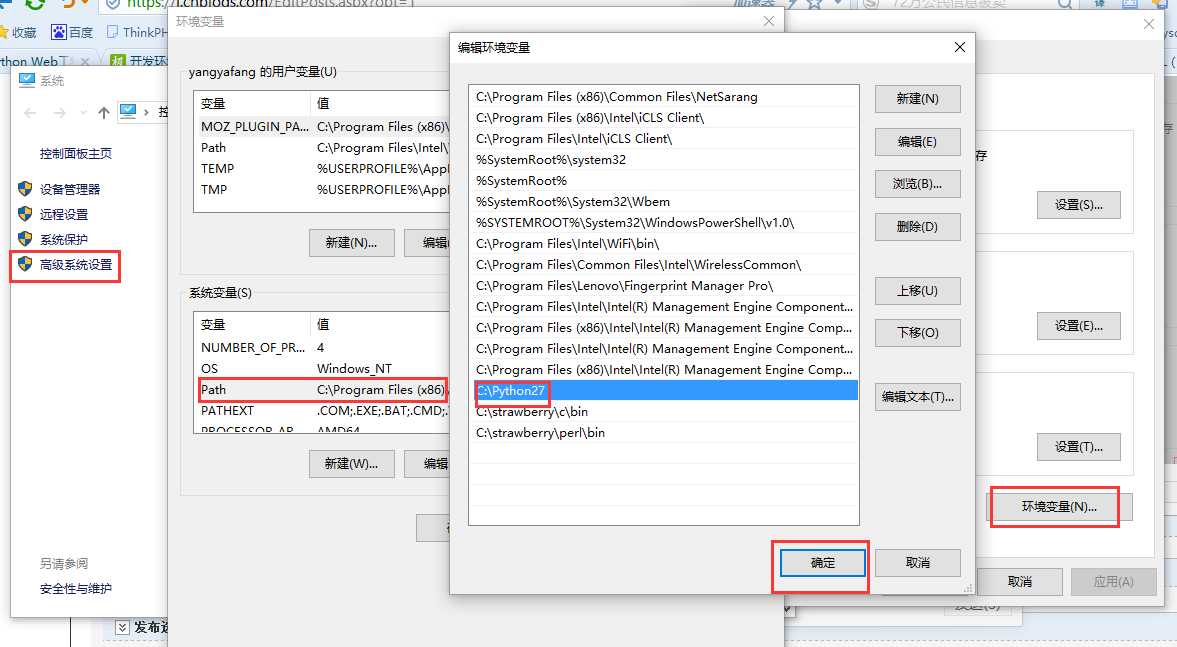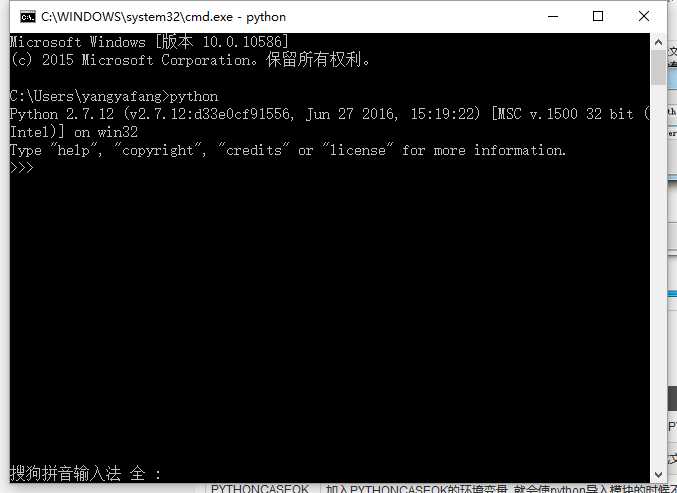python6
Posted 林木森3
tags:
篇首语:本文由小常识网(cha138.com)小编为大家整理,主要介绍了python6相关的知识,希望对你有一定的参考价值。
第一部分
代码1
import pandas as pd from sqlalchemy import create_engine engine = create_engine(\'mysql+pymysql://root:102011@localhost/test?charset=utf8\') sql = pd.read_sql(\'all_gzdata\', engine, chunksize = 10000) \'\'\' 用create_engine建立连接,连接地址的意思依次为“数据库格式(mysql)+程序名(pymysql)+账号密码@地址端口/数据库名(test)”,最后指定编码为utf8; all_gzdata是表名,engine是连接数据的引擎,chunksize指定每次读取1万条记录。这时候sql是一个容器,未真正读取数据。 \'\'\'
代码2
counts = [ i[\'fullURLId\'].value_counts() for i in sql] #按次10000存取,逐块统计 counts = counts.copy() counts = pd.concat(counts).groupby(level=0).sum() #合并统计结果,把相同的统计项合并(即按index分组并求和) counts = counts.reset_index() #重新设置index,将原来的index作为counts的一列。 counts.columns = [\'index\', \'num\'] #重新设置列名,主要是第二列,默认为0 counts[\'type\'] = counts[\'index\'].str.extract(\'(\\d3)\') #提取前三个数字作为类别id counts_ = counts[[\'type\', \'num\']].groupby(\'type\').sum() #按类别合并 counts_.sort_values(\'num\', ascending = False) #降序排列 counts_[\'percentage\'] = (counts_[\'num\']/counts_[\'num\'].sum())*100 print(counts_)
type num percentage
101 411665 49.156965
102 17357 2.072601
103 1715 0.204788
106 3957 0.472506
107 182900 21.840110
199 201426 24.052302
301 18430 2.200728
代码3
#统计107类别的情况 def count107(i): #自定义统计函数 j = i[[\'fullURL\']][i[\'fullURLId\'].str.contains(\'107\')].copy() #找出类别包含107的网址 j[\'type\'] = None #添加空列 j[\'type\'][j[\'fullURL\'].str.contains(\'info/.+?/\')] = u\'知识首页\' #info以/结尾 j[\'type\'][j[\'fullURL\'].str.contains(\'info/.+?/.+?\')] = u\'知识列表页\' j[\'type\'][j[\'fullURL\'].str.contains(\'/\\d+?_*\\d+?\\.html\')] = u\'知识内容页\' return j[\'type\'].value_counts() engine = create_engine(\'mysql+pymysql://root:102011@localhost/test?charset=utf8\') sql = pd.read_sql(\'all_gzdata\', engine, chunksize = 10000) counts2 = [count107(i) for i in sql] #逐块统计 counts2 = pd.concat(counts2).groupby(level=0).sum() #合并统计结果 print(counts2) #计算各个部分的占比 res107 = pd.DataFrame(counts2) # res107.reset_index(inplace=True) res107.index.name= u\'107类型\' res107.rename(columns=\'type\':\'num\',inplace=True) res107[u\'比例\'] = (res107[\'num\']/res107[\'num\'].sum())*100 res107.reset_index(inplace = True) print(res107)
知识内容页 164243 知识列表页 9656 知识首页 9001 Name: type, dtype: int64 107类型 num 比例 0 知识内容页 164243 89.799344 1 知识列表页 9656 5.279388 2 知识首页 9001 4.921268
代码4
def countquestion(i): # 自定义统计函数 j = i[[\'fullURLId\']][i[\'fullURL\'].str.contains(\'\\?\')].copy() # 找出类别包含107的网址 return j #engine = create_engine(\'mysql+pymysql://root:123456@127.0.0.1:3306/test?charset=utf8\') sql = pd.read_sql(\'all_gzdata\', engine, chunksize = 10000) counts3 = [countquestion(i)[\'fullURLId\'].value_counts() for i in sql] counts3 = pd.concat(counts3).groupby(level=0).sum() print(counts3) # 求各个类型的占比并保存数据 df1 = pd.DataFrame(counts3) df1[\'perc\'] = df1[\'fullURLId\']/df1[\'fullURLId\'].sum()*100 df1.sort_values(by=\'fullURLId\',ascending=False,inplace=True) print(df1.round(4))
101003 47
102002 25
107001 346
1999001 64718
301001 356
Name: fullURLId, dtype: int64
fullURLId perc
1999001 64718 98.8182
301001 356 0.5436
107001 346 0.5283
101003 47 0.0718
102002 25 0.0382
def page199(i): # 自定义统计函数 j = i[[\'fullURL\', \'pageTitle\']][(i[\'fullURLId\'].str.contains(\'199\')) & (i[\'fullURL\'].str.contains(\'\\?\'))] j[\'pageTitle\'].fillna(\'空\', inplace=True) j[\'type\'] = \'其他\' # 添加空列 j[\'type\'][j[\'pageTitle\'].str.contains(\'法律快车-律师助手\')] = \'法律快车-律师助手\' j[\'type\'][j[\'pageTitle\'].str.contains(\'咨询发布成功\')] = \'咨询发布成功\' j[\'type\'][j[\'pageTitle\'].str.contains(\'免费发布法律咨询\')] = \'免费发布法律咨询\' j[\'type\'][j[\'pageTitle\'].str.contains(\'法律快搜\')] = \'快搜\' j[\'type\'][j[\'pageTitle\'].str.contains(\'法律快车法律经验\')] = \'法律快车法律经验\' j[\'type\'][j[\'pageTitle\'].str.contains(\'法律快车法律咨询\')] = \'法律快车法律咨询\' j[\'type\'][(j[\'pageTitle\'].str.contains(\'_法律快车\')) | (j[\'pageTitle\'].str.contains(\'-法律快车\'))] = \'法律快车\' j[\'type\'][j[\'pageTitle\'].str.contains(\'空\')] = \'空\' return j # 注意:获取一次sql对象就需要重新访问一下数据库 # engine = create_engine(\'mysql+pymysql://root:123456@127.0.0.1:3306/test?charset=utf8\') sql = pd.read_sql(\'all_gzdata\', engine, chunksize=10000) # 分块读取数据库信息 # sql = pd.read_sql_query(\'select * from all_gzdata limit 10000\', con=engine) counts4 = [page199(i) for i in sql] # 逐块统计 counts4 = pd.concat(counts4) d1 = counts4[\'type\'].value_counts() print(d1) d2 = counts4[counts4[\'type\'] == \'其他\'] print(d2) # 求各个部分的占比并保存数据 df1_ = pd.DataFrame(d1) df1_[\'perc\'] = df1_[\'type\'] / df1_[\'type\'].sum() * 100 df1_.sort_values(by=\'type\', ascending=False, inplace=True) print(df1_)
法律快车-律师助手 49894 法律快车法律咨询 6421 咨询发布成功 5220 快搜 1943 法律快车 818 其他 359 法律快车法律经验 59 空 4 Name: type, dtype: int64 fullURL \\ 2631 http://www.lawtime.cn/spelawyer/index.php?py=g... 2632 http://www.lawtime.cn/spelawyer/index.php?py=g... 1677 http://m.baidu.com/from=844b/bd_page_type=1/ss... 4303 http://m.baidu.com/from=0/bd_page_type=1/ssid=... 3673 http://www.lawtime.cn/lawyer/lll25879862593080... ... ... 4829 http://www.lawtime.cn/spelawyer/index.php?m=se... 4837 http://www.lawtime.cn/spelawyer/index.php?m=se... 4842 http://www.lawtime.cn/spelawyer/index.php?m=se... 8302 http://www.lawtime.cn/spelawyer/index.php?m=se... 5034 http://www.baidu.com/link?url=O7iBD2KmoJdkHWTZ... pageTitle type 2631 个旧律师成功案例 - 法律快车提供个旧知名律师、优秀律师、专业律师的咨询和推荐 其他 2632 个旧律师成功案例 - 法律快车提供个旧知名律师、优秀律师、专业律师的咨询和推荐 其他 1677 婚姻法论文 - 法律快车法律论文 其他 4303 什么是机动车?什么是非机动车? - 法律快车交通事故 其他 3673 404错误提示页面 - 法律快车 其他 ... ... ... 4829 律师搜索,律师查找 - 法律快车提供全国知名律师、优秀律师、专业律师的咨询和推荐 其他 4837 律师搜索,律师查找 - 法律快车提供全国知名律师、优秀律师、专业律师的咨询和推荐 其他 4842 律师搜索,律师查找 - 法律快车提供全国知名律师、优秀律师、专业律师的咨询和推荐 其他 8302 律师搜索,律师查找 - 法律快车提供全国知名律师、优秀律师、专业律师的咨询和推荐 其他 5034 离婚协议书范本(2015年版) - 法律快车婚姻法 其他 [359 rows x 3 columns] type 1999001 总数 perc 法律快车-律师助手 49894 77.094471 法律快车法律咨询 6421 9.921506 咨询发布成功 5220 8.065762 快搜 1943 3.002256 法律快车 818 1.263945 其他 359 0.554714 法律快车法律经验 59 0.091165 空 4 0.006181
代码6
#6无目的用户 def xiaguang(i): # 自定义统计函数 j = i.loc[(i[\'fullURL\'].str.contains(\'\\.html\')) == False, [\'fullURL\', \'fullURLId\', \'pageTitle\']] return j # 注意获取一次sql对象就需要重新访问一下数据库 engine = create_engine(\'mysql+pymysql://root:102011@127.0.0.1:3306/test?charset=utf8\') sql = pd.read_sql(\'all_gzdata\', engine, chunksize=10000) # 分块读取数据库信息 counts5 = [xiaguang(i) for i in sql] counts5 = pd.concat(counts5) xg1 = counts5[\'fullURLId\'].value_counts() print(xg1) # 求各个部分的占比 xg_ = pd.DataFrame(xg1) xg_.reset_index(inplace=True) xg_.columns = [\'index\', \'num\'] xg_[\'perc\'] = xg_[\'num\'] / xg_[\'num\'].sum() * 100 xg_.sort_values(by=\'num\', ascending=False, inplace=True) xg_[\'type\'] = xg_[\'index\'].str.extract(\'(\\d3)\') # 提取前三个数字作为类别id xgs_ = xg_[[\'type\', \'num\']].groupby(\'type\').sum() # 按类别合并 xgs_.sort_values(by=\'num\', ascending=False, inplace=True) # 降序排列 xgs_[\'percentage\'] = xgs_[\'num\'] / xgs_[\'num\'].sum() * 100 print(xgs_.round(4))
1999001 117124
107001 17843
102002 12021
101001 5603
106001 3957
102001 2129
102003 1235
301001 1018
101009 854
102007 538
102008 404
101008 378
102004 361
102005 271
102009 214
102006 184
101004 125
101006 107
101005 63
Name: fullURLId, dtype: int64
type num percentage
199 117124 71.2307
107 17843 10.8515
102 17357 10.5559
101 7130 4.3362
106 3957 2.4065
301 1018 0.6191
代码7
# 分析网页点击次数 # 统计点击次数 engine = create_engine(\'mysql+pymysql://root:102011@127.0.0.1:3306/test?charset=utf8\') sql = pd.read_sql(\'all_gzdata\', engine, chunksize = 10000)# 分块读取数据库信息 counts1 = [i[\'realIP\'].value_counts() for i in sql] # 分块统计各个IP的出现次数 counts1 = pd.concat(counts1).groupby(level=0).sum() # 合并统计结果,level=0表示按照index分组 print(counts1) counts1_ = pd.DataFrame(counts1) counts1_ counts1[\'realIP\'] = counts1.index.tolist() counts1_[1]=1 # 添加1列全为1 hit_count = counts1_.groupby(\'realIP\').sum() # 统计各个“不同点击次数”分别出现的次数 # 也可以使用counts1_[\'realIP\'].value_counts()功能 hit_count.columns=[\'用户数\'] hit_count.index.name = \'点击次数\' # 统计1~7次、7次以上的用户人数 hit_count.sort_index(inplace = True) hit_count_7 = hit_count.iloc[:7,:] time = hit_count.iloc[7:,0].sum() # 统计点击次数7次以上的用户数 hit_count_7 = hit_count_7.append([\'用户数\':time], ignore_index=True) hit_count_7.index = [\'1\',\'2\',\'3\',\'4\',\'5\',\'6\',\'7\',\'7次以上\'] hit_count_7[\'用户比例\'] = hit_count_7[\'用户数\'] / hit_count_7[\'用户数\'].sum() print(hit_count_7) 82033 2 95502 1 103182 1 116010 2 136206 1 .. 4294809358 2 4294811150 1 4294852154 3 4294865422 2 4294917690 1 Name: realIP, Length: 230149, dtype: int64 用户数 用户比例 1 132119 0.574059 2 44175 0.191941 3 17573 0.076355 4 10156 0.044128 5 5952 0.025862 6 4132 0.017954 7 2632 0.011436 7次以上 13410 0.058267
代码8
# 分析浏览一次的用户行为 engine = create_engine(\'mysql+pymysql://root:102011@127.0.0.1:3306/test?charset=utf8\') all_gzdata = pd.read_sql_table(\'all_gzdata\', con = engine) # 读取all_gzdata数据 #对realIP进行统计 # 提取浏览1次网页的数据 real_count = pd.DataFrame(all_gzdata.groupby("realIP")["realIP"].count()) real_count.columns = ["count"] real_count["realIP"] = real_count.index.tolist() user_one = real_count[(real_count["count"] == 1)] # 提取只登录一次的用户 # 通过realIP与原始数据合并 real_one = pd.merge(user_one, all_gzdata,right_on=\'realIP\',left_index=True,how=\'left\') # 统计浏览一次的网页类型 URL_count = pd.DataFrame(real_one.groupby("fullURLId")["fullURLId"].count()) URL_count.columns = ["count"] URL_count.sort_values(by=\'count\', ascending=False, inplace=True) # 降序排列 # 统计排名前4和其他的网页类型 URL_count_4 = URL_count.iloc[:4,:] time = hit_count.iloc[4:,0].sum() # 统计其他的 URLindex = URL_count_4.index.values URL_count_4 = URL_count_4.append([\'count\':time], ignore_index=True) URL_count_4.index = [URLindex[0], URLindex[1], URLindex[2], URLindex[3], \'其他\'] URL_count_4[\'比例\'] = URL_count_4[\'count\'] / URL_count_4[\'count\'].sum() print(URL_count_4) count 比例 101003 102560 0.649011 107001 19443 0.123037 1999001 9381 0.059364 301001 515 0.003259 其他 26126 0.165328
代码9
# 在浏览1次的前提下, 得到的网页被浏览的总次数 fullURL_count = pd.DataFrame(real_one.groupby("fullURL")["fullURL"].count()) fullURL_count.columns = ["count"] fullURL_count["fullURL"] = fullURL_count.index.tolist() fullURL_count.sort_values(by=\'count\', ascending=False, inplace=True) # 降序排列 print(fullURL_count.head(10)) count \\ fullURL http://www.lawtime.cn/info/shuifa/slb/201211197... 1013 http://www.lawtime.cn/info/hunyin/lhlawlhxy/201... 501 http://www.lawtime.cn/ask/question_925675.html 423 http://www.lawtime.cn/info/shuifa/slb/201211197... 367 http://www.lawtime.cn/ask/exp/13655.html 301 http://www.lawtime.cn/ask/exp/8495.html 241 http://www.lawtime.cn/ask/exp/13445.html 199 http://www.lawtime.cn/guangzhou 177 http://www.lawtime.cn/ask/exp/17357.html 171 http://www.lawtime.cn/citylist.php 117 fullURL fullURL http://www.lawtime.cn/info/shuifa/slb/201211197... http://www.lawtime.cn/info/shuifa/slb/20121119... http://www.lawtime.cn/info/hunyin/lhlawlhxy/201... http://www.lawtime.cn/info/hunyin/lhlawlhxy/20... http://www.lawtime.cn/ask/question_925675.html http://www.lawtime.cn/ask/question_925675.html http://www.lawtime.cn/info/shuifa/slb/201211197... http://www.lawtime.cn/info/shuifa/slb/20121119... http://www.lawtime.cn/ask/exp/13655.html http://www.lawtime.cn/ask/exp/13655.html http://www.lawtime.cn/ask/exp/8495.html http://www.lawtime.cn/ask/exp/8495.html http://www.lawtime.cn/ask/exp/13445.html http://www.lawtime.cn/ask/exp/13445.html http://www.lawtime.cn/guangzhou http://www.lawtime.cn/guangzhou http://www.lawtime.cn/ask/exp/17357.html http://www.lawtime.cn/ask/exp/17357.html http://www.lawtime.cn/citylist.php http://www.lawtime.cn/citylist.php
第二部分
代码10
import os import re import pandas as pd import pymysql as pm from random import sample # 修改工作路径到指定文件夹 os.chdir("D:/python123") # 读取数据 con = pm.connect(host=\'localhost\',user=\'root\',password=\'102011\',database=\'test\',charset=\'utf8\') data = pd.read_sql(\'select * from all_gzdata\',con=con) con.close() #关闭连接 # 取出107类型数据 index107 = [re.search(\'107\',str(i))!=None for i in data.loc[:,\'fullURLId\']] data_107 = data.loc[index107,:] # 在107类型中筛选出婚姻类数据 index = [re.search(\'hunyin\',str(i))!=None for i in data_107.loc[:,\'fullURL\']] data_hunyin = data_107.loc[index,:] # 提取所需字段(realIP、fullURL) info = data_hunyin.loc[:,[\'realIP\',\'fullURL\']] # 去除网址中“?”及其后面内容 da = [re.sub(\'\\?.*\',\'\',str(i)) for i in info.loc[:,\'fullURL\']] info.loc[:,\'fullURL\'] = da # 将info中‘fullURL’那列换成da # 去除无html网址 index = [re.search(\'\\.html\',str(i))!=None for i in info.loc[:,\'fullURL\']] index.count(True) # True 或者 1 , False 或者 0 info1 = info.loc[index,:] print(info1.head()) realIP fullURL 0 2683657840 http://www.lawtime.cn/info/hunyin/hunyinfagui/... 4 2683657840 http://www.lawtime.cn/info/hunyin/hunyinfagui/... 9 1275347569 http://www.lawtime.cn/info/hunyin/lhlawlhxy/20... 62 1531496412 http://www.lawtime.cn/info/hunyin/hunyinfagui/... 86 838215995 http://www.lawtime.cn/info/hunyin/lhlawlhxy/20...
代码11
# 找出翻页和非翻页网址 index = [re.search(\'/\\d+_\\d+\\.html\',i)!=None for i in info1.loc[:,\'fullURL\']] index1 = [i==False for i in index] info1_1 = info1.loc[index,:] # 带翻页网址 info1_2 = info1.loc[index1,:] # 无翻页网址 # 将翻页网址还原 da = [re.sub(\'_\\d+\\.html\',\'.html\',str(i)) for i in info1_1.loc[:,\'fullURL\']] info1_1.loc[:,\'fullURL\'] = da # 翻页与非翻页网址合并 frames = [info1_1,info1_2] info2 = pd.concat(frames) # 或者 info2 = pd.concat([info1_1,info1_2],axis = 0) # 默认为0,即行合并 # 去重(realIP和fullURL两列相同) info3 = info2.drop_duplicates() # 将IP转换成字符型数据 info3.iloc[:,0] = [str(index) for index in info3.iloc[:,0]] info3.iloc[:,1] = [str(index) for index in info3.iloc[:,1]] len(info3)
代码12
# 筛选满足一定浏览次数的IP IP_count = info3[\'realIP\'].value_counts() # 找出IP集合 IP = list(IP_count.index) count = list(IP_count.values) # 统计每个IP的浏览次数,并存放进IP_count数据框中,第一列为IP,第二列为浏览次数 IP_count = pd.DataFrame(\'IP\':IP,\'count\':count) # 3.3筛选出浏览网址在n次以上的IP集合 n = 2 index = IP_count.loc[:,\'count\']>n IP_index = IP_count.loc[index,\'IP\'] print(IP_index.head()) 0 2609113527 1 3812410744 2 225896631 3 242673847 4 1190924814 Name: IP, dtype: object
代码13
# 划分IP集合为训练集和测试集 index_tr = sample(range(0,len(IP_index)),int(len(IP_index)*0.8)) # 或者np.random.sample index_te = [i for i in range(0,len(IP_index)) if i not in index_tr] IP_tr = IP_index[index_tr] IP_te = IP_index[index_te] # 将对应数据集划分为训练集和测试集 index_tr = [i in list(IP_tr) for i in info3.loc[:,\'realIP\']] index_te = [i in list(IP_te) for i in info3.loc[:,\'realIP\']] data_tr = info3.loc[index_tr,:] data_te = info3.loc[index_te,:] print(len(data_tr)) IP_tr = data_tr.iloc[:,0] # 训练集IP url_tr = data_tr.iloc[:,1] # 训练集网址 IP_tr = list(set(IP_tr)) # 去重处理 url_tr = list(set(url_tr)) # 去重处理 len(url_tr)
代码14
# 利用训练集数据构建模型 UI_matrix_tr = pd.DataFrame(0,index=IP_tr,columns=url_tr) # 求用户-物品矩阵 for i in data_tr.index: UI_matrix_tr.loc[data_tr.loc[i,\'realIP\'],data_tr.loc[i,\'fullURL\']] = 1 # sum(UI_matrix_tr.sum(axis=1)) # 求物品相似度矩阵(因计算量较大,需要耗费的时间较久) Item_matrix_tr = pd.DataFrame(0,index=url_tr,columns=url_tr) for i in Item_matrix_tr.index: for j in Item_matrix_tr.index: a = sum(UI_matrix_tr.loc[:,[i,j]].sum(axis=1)==2) b = sum(UI_matrix_tr.loc[:,[i,j]].sum(axis=1)!=0) Item_matrix_tr.loc[i,j] = a/b # 将物品相似度矩阵对角线处理为零 for i in Item_matrix_tr.index: Item_matrix_tr.loc[i,i]=0 #利用测试集数据对模型评价 IP_te = data_te.iloc[:,0] url_te = data_te.iloc[:,1] IP_te = list(set(IP_te)) url_te = list(set(url_te)) # 测试集数据用户物品矩阵 UI_matrix_te = pd.DataFrame(0,index=IP_te,columns=url_te) for i in data_te.index: UI_matrix_te.loc[data_te.loc[i,\'realIP\'],data_te.loc[i,\'fullURL\']] = 1 # 对测试集IP进行推荐 Res = pd.DataFrame(\'NaN\',index=data_te.index,columns=[\'IP\',\'已浏览网址\',\'推荐网址\',\'T/F\']) Res.loc[:,\'IP\']=list(data_te.iloc[:,0]) Res.loc[:,\'已浏览网址\']=list(data_te.iloc[:,1]) # 开始推荐 for i in Res.index: if Res.loc[i,\'已浏览网址\'] in list(Item_matrix_tr.index): Res.loc[i,\'推荐网址\'] = Item_matrix_tr.loc[Res.loc[i,\'已浏览网址\'],:].idxmax() if Res.loc[i,\'推荐网址\'] in url_te: Res.loc[i,\'T/F\']=UI_matrix_te.loc[Res.loc[i,\'IP\'],Res.loc[i,\'推荐网址\']]==1 else: Res.loc[i,\'T/F\'] = False # 保存推荐结果 Res.to_csv(\'D:/python123/Res.csv\',index=False,encoding=\'utf8\')
代码15
# 读取保存的推荐结果 Res = pd.read_csv(\'D:/python123/Res.csv\',keep_default_na=False, encoding=\'utf8\') # 计算推荐准确率 Pre = round(sum(Res.loc[:,\'T/F\']==\'True\') / (len(Res.index)-sum(Res.loc[:,\'T/F\']==\'NaN\')), 3) print(\'推荐准确率:\',Pre) # 计算推荐召回率 Rec = round(sum(Res.loc[:,\'T/F\']==\'True\') / (sum(Res.loc[:,\'T/F\']==\'True\')+sum(Res.loc[:,\'T/F\']==\'NaN\')), 3) print(\'推荐召回率:\',Rec) # 计算F1指标 F1 = round(2*Pre*Rec/(Pre+Rec),3) print(\'推荐F1指标:\',F1)
Python学习--Python 环境搭建
Python环境搭建
Python是跨平台的编程语言,可应用于Windows、Linux、Mac OS X。你可以通过终端窗口输入"python"命令来查看本地是否安装了Python已经安装的Python的版本。
Python下载
你可以到Python的官网下载你想要的版本。(Python官网:http://www.python.org/)你也可以下载Python官网文档。(Python文档下载地址:www.python.org/doc/)
Python安装
Python可以被安装在不同的平台上,以下为不同平台上安装Python的方法:
Windows平台安装Python:
以下为windows平台安装Python的简单步骤:
- 在浏览器中打开http://www.python.org/download/。
- 在下载列表中选择Window平台安装包,包格式为:python-XYZ.msi 文件 , XYZ 为你要安装的版本号。
- 要使用安装程序 python-XYZ.msi, Windows系统必须支持Microsoft Installer 2.0搭配使用。只要保存安装文件到本地计算机,然后运行它,看看你的机器支持MSI。Windows XP和更高版本已经有MSI,很多老机器也可以安装MSI。
- 下载后,双击下载包,进入Python安装向导,安装非常简单,你只需要使用默认的设置一直点击"下一步"直到安装完成即可。
Unix & Linux 平台安装 Python:
以下为在Unix & Linux 平台上安装 Python 的简单步骤:
- 在浏览器中打开http://www.python.org/download/。
- 在下载列表中选择适合于Unix/Linux的源码压缩包。
- 下载及解压压缩包。
- 如果你需要自定义一些选项修改Modules/Setup
- 执行./configure
- make
- make install
操作完成后,Python会安装在 /usr/local/bin 目录中,Python库安装在/usr/local/lib/pythonXX,XX为你使用的Python的版本号。
MAC 平台安装 Python:
最近的Macs系统都自带有Python环境,你也可以在链接 http://www.python.org/download/ 上下载最新版安装。
配置环境变量
程序和可执行文件可以在许多目录,而这些路径很可能不在操作系统提供可执行文件的搜索路径中。path(路径)存储在环境变量中,这是由操作系统维护的一个命名的字符串。这些变量包含可用的命令行解释器和其他程序的信息。Unix或Windows中路径变量为PATH(UNIX区分大小写,Windows不区分大小写)。在Mac OS中,安装程序过程中改变了python的安装路径。如果你需要在其他目录引用Python,你必须在path中添加Python目录。
在Windows设置环境变量
通过以下方式设置:
- 右键点击"计算机",然后点击"属性"。
- 后点击"高级系统设置"。
- 选择"系统变量"窗口下面的"Path",双击即可!
- 然后在"Path"行,添加python安装路径即可(我的C:\\Python27),所以在后面,添加该路径即可。 ps:记住,路径直接用分号";"隔开!
- 最后设置成功以后,在cmd命令行,输入命令"python",就可以有相关显示。


运行Python
有三种方式可以运行Python:
1、交互式解释器
你可以通过命令行窗口进入python并且在交互式解释器中开始编写python代码。
E:>python
2、命令行脚本
E:\\Python>python hello.py
3、集成开发环境(IDE:Integrated Development Environment)
您可以使用图形用户界面(GUI)环境来编写及运行Python代码。以下推荐各个平台上使用的IDE:
- Unix: IDLE 是 UNIX 上最早的 Python IDE 。
- Windows: PyCharm是一个强大的Python集成开发环境。
- Macintosh: Python 的 Mac 可以使用 IDLE IDE,你可以在网站上下载对应MAC的IDLE 。
以上是关于python6的主要内容,如果未能解决你的问题,请参考以下文章